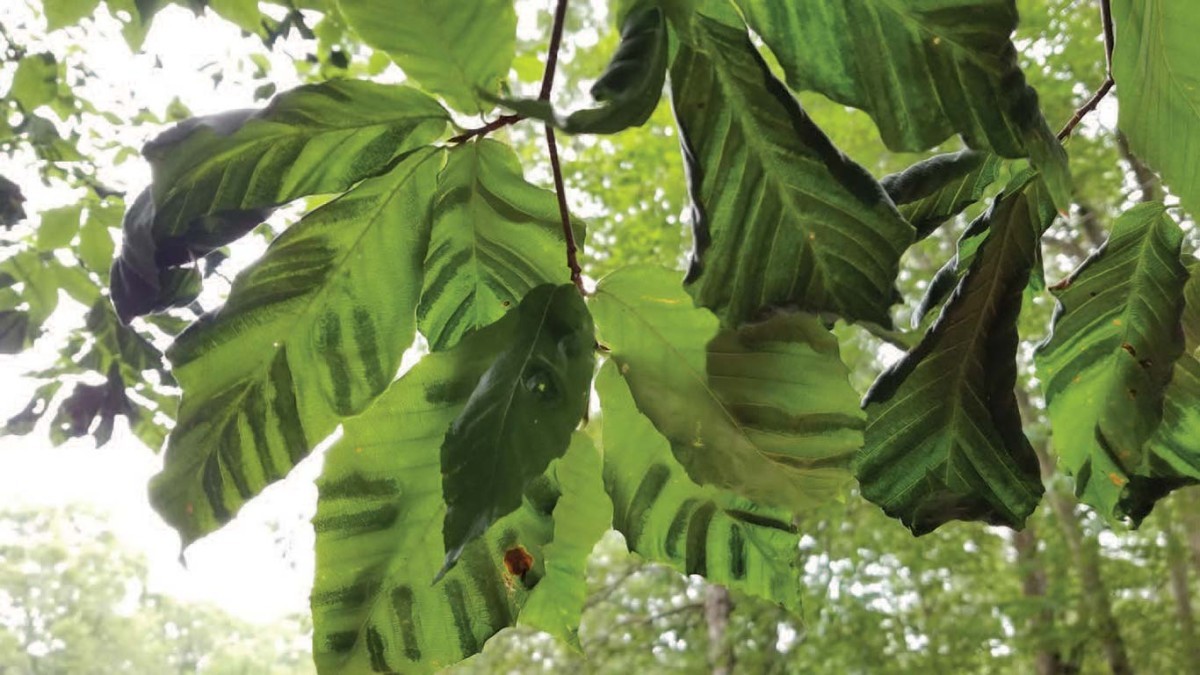Scientists are tracking a newly identified disease that kills American beech trees, and it is now spreading in southern New England and moving north. A microscopic worm called a nematode that feeds inside the tree’s leaves causes beech leaf disease, first identified in northeast Ohio in 2012.
Heather Faubert, coordinator of the Plant Protection Clinic at the University of Rhode Island, is monitoring the spread of the disease in the Ocean State and working with Forest Service scientists to set up monitoring plots throughout New England. She said that symptoms of the disease are dramatic and easy to see.
“On infected trees, you can see very distinctive stripes between the veins of the leaves,” said Faubert, a member of the Beech Leaf Disease Working Group organized by Ohio State University researchers. “The whole region between the veins is a deep green, so if you hold a leaf up to the sun, you can see dark bands running parallel to the veins. We believe the nematodes are overwintering in the buds, and that’s where the damage is happening, because when you look at the mature leaves you don’t find the nematodes.” She said the energy expended to regrow leaves after infected leaves fall off causes great stress to the trees, and if it happens several years in a row, the trees often die.
No treatment is currently available to combat the disease, as nematodes are difficult to control in the forest environment, but research is underway to identify treatments for individual landscape trees. Some of the commercial tree-care companies conducted several chemical trials last year, but they had poor results.
“The worst part is that we don’t know what to do about it yet,” Faubert said. “We also don’t know how it’s being transmitted from tree to tree, so if people walk around in an area of diseased trees, they should probably wash the bottom of their shoes before going into another forest.” She also recommends that residents avoid digging up beech tree saplings from one forest and transplanting them elsewhere so as not to move potentially diseased trees to uninfected areas.
American beech trees are not highly valued for lumber and many foresters consider them undesirable, yet their mast is an important food for wildlife. Faubert noted they are among the most beautiful trees in the region because of their smooth bark and copper-colored fall foliage. The species has been expanding throughout the Northeast in recent decades because it grows well in the warming temperatures associated with the changing climate. A University of Maine study found that the abundance of American beech trees in New England forests has increased substantially since the 1980s. “Beeches have become such an important forest tree in our area, so if we lose it to this disease, it will greatly affect our forests,” Faubert said.
Beech leaf disease isn’t the only disease affecting American beech trees in the region. Beech bark disease, caused by a sap-feeding scale insect that provides access for a tree-killing fungus, has been affecting beech forests since the 1930s.



Discussion *